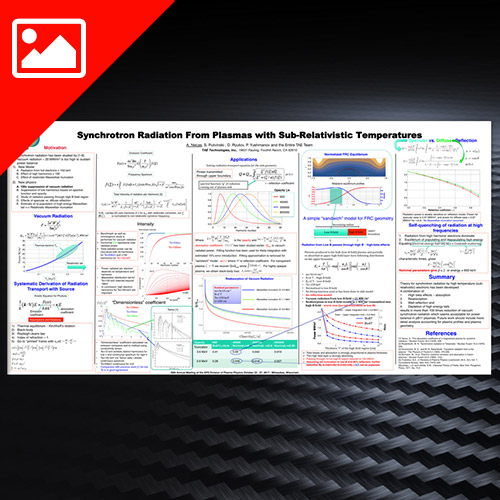
Synchrotron Radiation From Plasmas with Sub-Relativistic Temperatures
Oct 2017 | A. Necas | APS-DPP | Poster
Theory for synchrotron radiation by high temperature (sub- relativistic) electrons has been developed

Oct 2017 | A. Necas | APS-DPP | Poster
Theory for synchrotron radiation by high temperature (sub- relativistic) electrons has been developed
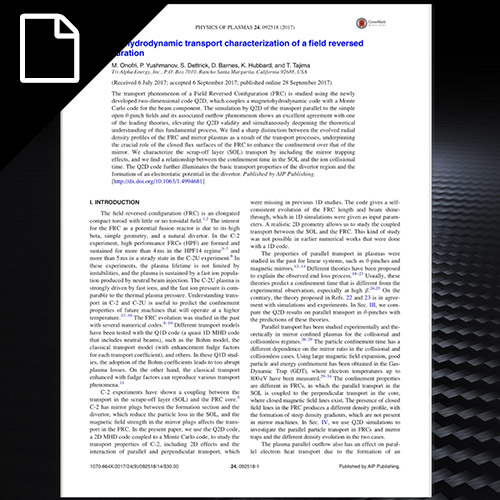
September 2017 | M. Onofri | Physics of Plasmas | Paper
The transport phenomenon of a Field Reversed Configuration (FRC) is studied using the newly developed two-dimensional code Q2D, which couples a magnetohydrodynamic code with a Monte Carlo code for the beam component. The simulation by Q2D of the transport parallel to the simple open h-pinch fields and its associated outflow phenomenon shows an excellent agreement with one of the leading theories, elevating the Q2D validity and simultaneously deepening the theoretical understanding of this fundamental process.
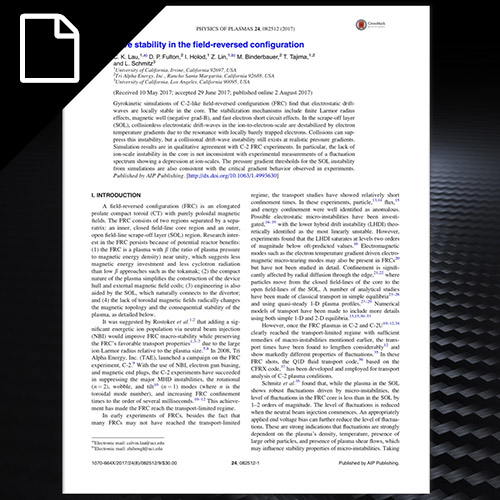
August 2017 | C. K. Lau | Physics of Plasmas | Paper
Gyrokinetic simulations of C-2-like field-reversed configuration (FRC) find that electrostatic drift- waves are locally stable in the core. The stabilization mechanisms include finite Larmor radius effects, magnetic well (negative grad-B), and fast electron short circuit effects.
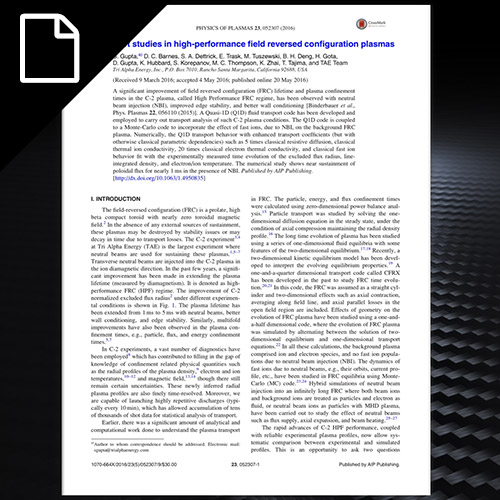
May 2016 | S. Gupta | Physics of Plasmas | Paper
A significant improvement of field reversed configuration (FRC) lifetime and plasma confinement times in the C-2 plasma, called High Performance FRC regime, has been observed with neutral beam injection (NBI), improved edge stability, and better wall conditioning.
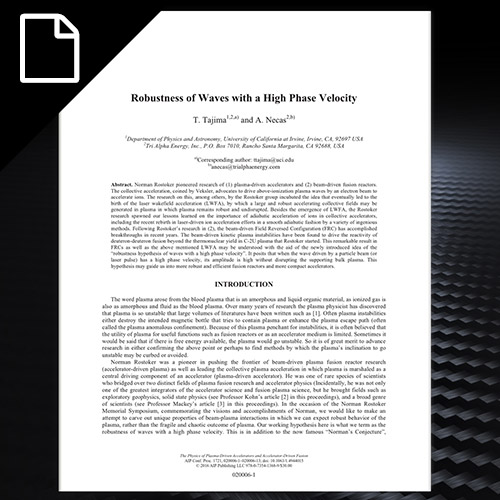
March 2016 | T. Tajima | AIP Conference Proceedings | Paper
Norman Rostoker pioneered research of (1) plasma-driven accelerators and (2) beam-driven fusion reactors. The collective acceleration, coined by Veksler, advocates to drive above-ionization plasma waves by an electron beam to accelerate ions. The research on this, among others, by the Rostoker group incubated the idea that eventually led to the birth of the laser wakefield acceleration (LWFA), by which a large and robust accelerating collective fields may be generated in plasma in which plasma remains robust and undisrupted.